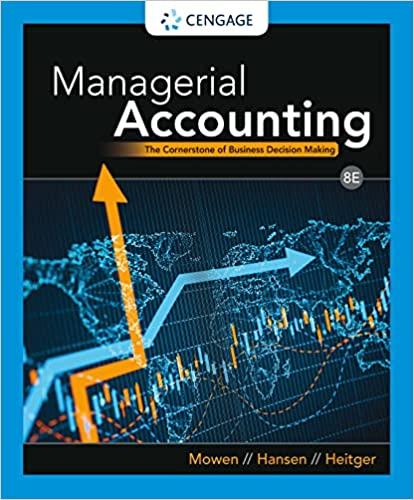Question
22.Refers to the difference between the cash balance recorded in your accounting system's cash account and the amount of cash showing in your company's bank
22.Refers to the difference between the cash balance recorded in your accounting system's cash account and the amount of cash showing in your company's bank account balances. a. Cash Float b. Mailing Float c. Clearing Float d. Processing Float
23.A kind of float occurs during the time it takes to validate the checks submitted by the payee and credited it to his account. a. Cash Float b. Mailing Float c. Clearing Float d. Processing Float
24.A kind of float from period the check is being sent by the payor until it arrives to the payee via courier / delivery. a. Cash Float b. Mailing Float c. Clearing Float d. Processing Float
25.The goal in cash management is to lengthen disbursement float and shorten collection float. a. True b. False
26.Other term for periodic inventory system. a. Manual System b. Physical System
27.I. Stock card serve as a monitoring sheet for the movement of inventories (in and out) not only on quantity but also the total amount of inventory costs. II. Stock card should be keep updated to ensure that orders are already made before the inventory will run out. a. Only I is true b. Only II is true c. All are true d. All are false
28.Inventory which requires the simplest controls possible, minimal records, large inventories, periodic review and reorder. a. A Items b. B Items c. C items
29.Inventory which require less tightly controlled, good records, regular review (1 Point) a. A Items b. B Items c. C items
30.Inventory which requires very tight control it should be completeand accurate records, frequent review is needed. a. A Items b. B Items c. C items
31.The following are the reasons for holding inventory, except? a. Quality b. Obsolescence c. Flexibility d. Cost e. All of these f. None of these
32.The following are the reasons for holding inventory, except? a. Quality b. Obsolescence c. Speed d. Cost e. All of these f. None of these
33.I. The EOQ answers the question how much to order. The enterprise specifically sets the order size that they would order to optimize the relevant inventory costs.
II. EOQ is also termed as OPTIMAL Q. a. Only I is true b. Only II is true c. All are true d. All are false
34.The term carrying costs and ordering costs is used for the computation of Economic Production Run (EPR) a. True b. False
35.A class of carrying costs which pertains to which include such items as insurance on the value of the inventory, inventory taxes, rent, obsolescence, record keeping costs and the likes. a. Out of the Pocket Costs b. Costs of Capital
36.A class of carrying costs associated with the cost of having funds in inventory rather than in other earning assets. a. Out of the Pocket Costs b. Costs of Capital
37.The relationship of ordering costs and carrying costs is: a. Directly Proportional b. Indirectly Proportional c. Always Equal d. None of these
38.Reorder Point (ROP) - is the quantity level that automatically triggers new order. This answers the questions - where to order. a. True b. False
39.It is a financial entity which belongs to its members, who are at the same time the owners and the customers of their bank. a. Universal Banks b. Commercial Banks c. Cooperative Banks d. Islamic Banks e. Thrift Bank f. Others as per BSP
40.It is community-focused, and smaller than retail and commercial banks. While the main lines of business continue to be loan origination and savings deposits, many of these type of bank offer checking accounts and other basic banking services. a. Universal Banks b. Commercial Banks c. Cooperative Banks d. Islamic Banks e. Thrift Bank f. Others as per BSP
Step by Step Solution
There are 3 Steps involved in it
Step: 1

Get Instant Access to Expert-Tailored Solutions
See step-by-step solutions with expert insights and AI powered tools for academic success
Step: 2

Step: 3

Ace Your Homework with AI
Get the answers you need in no time with our AI-driven, step-by-step assistance
Get Started


